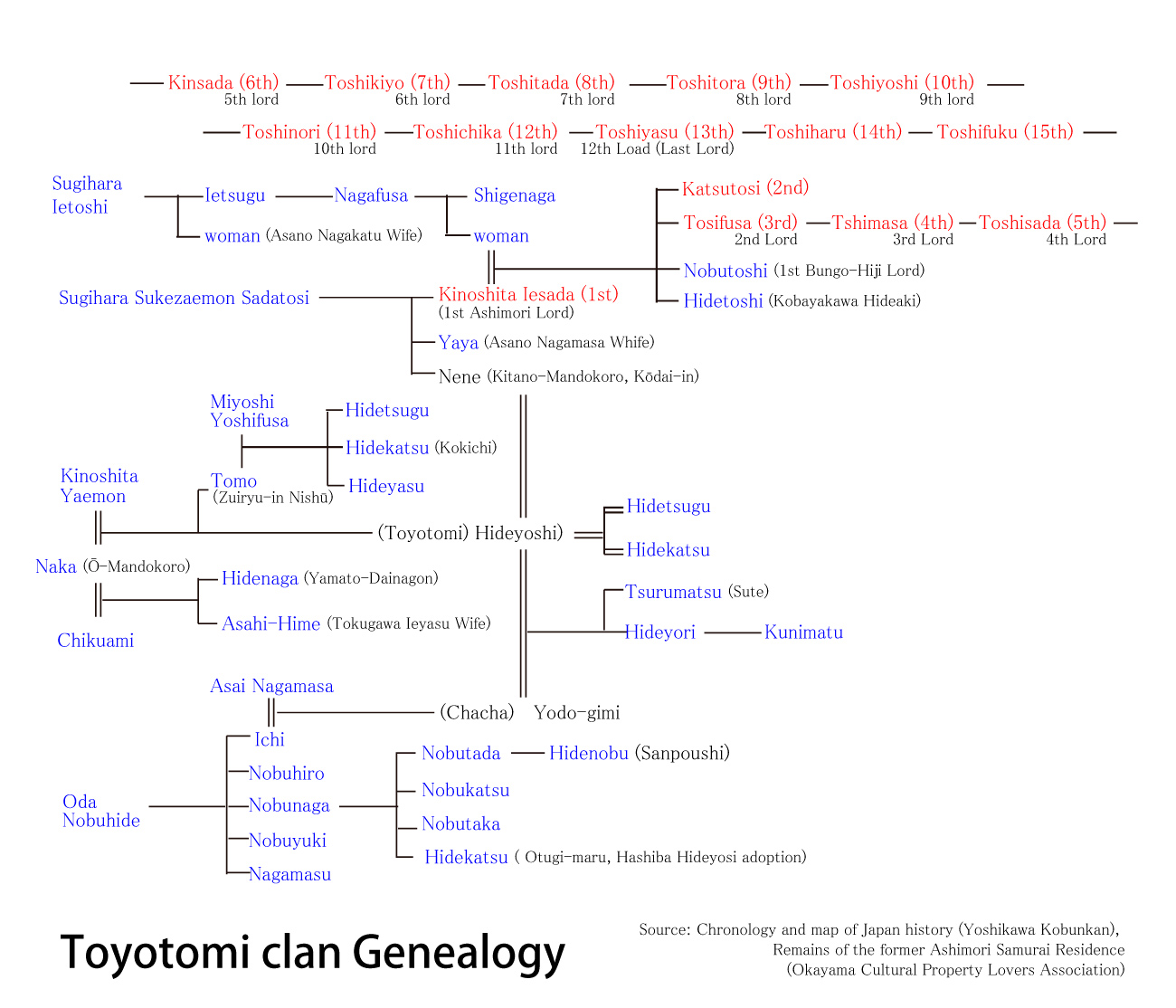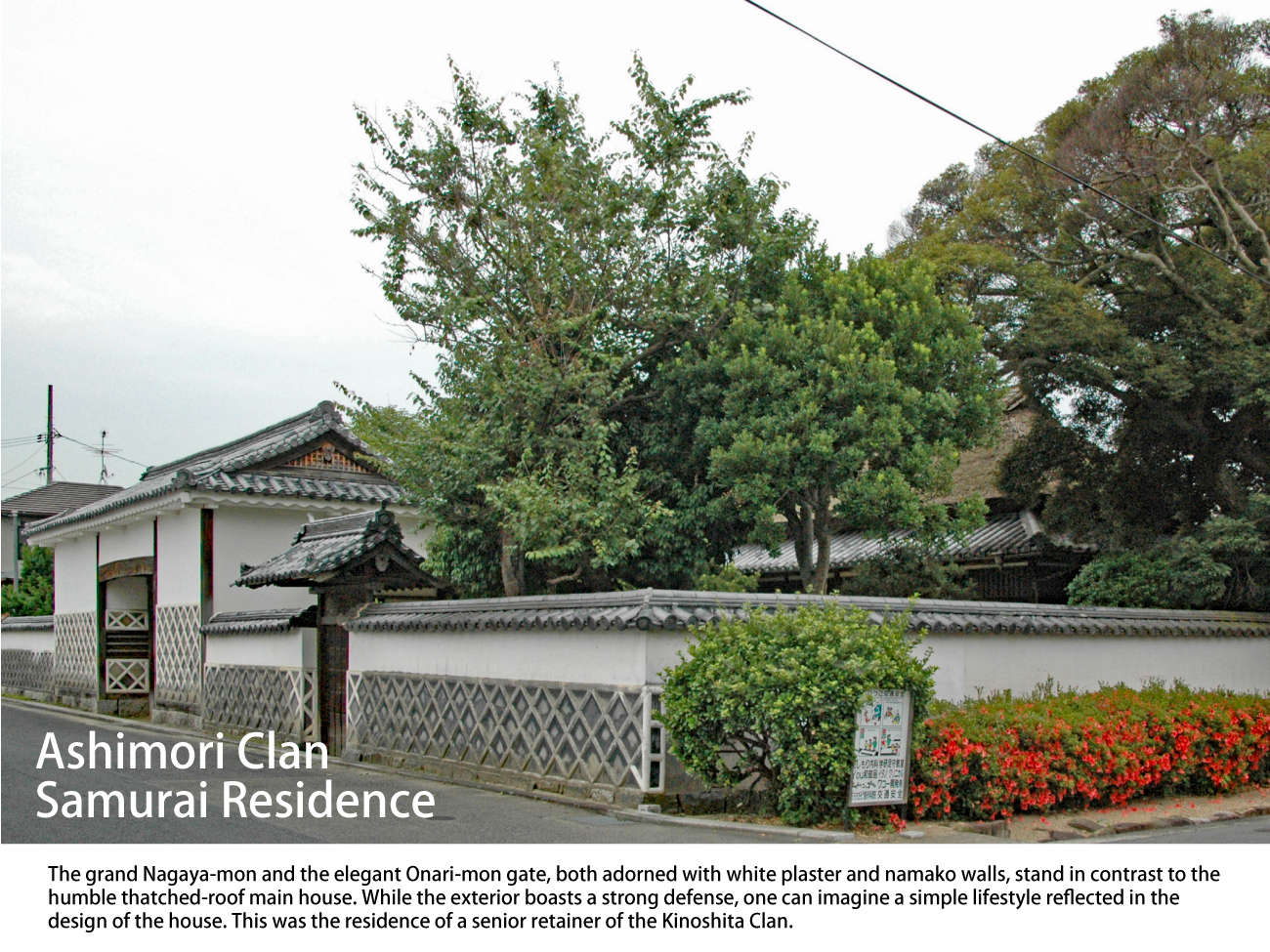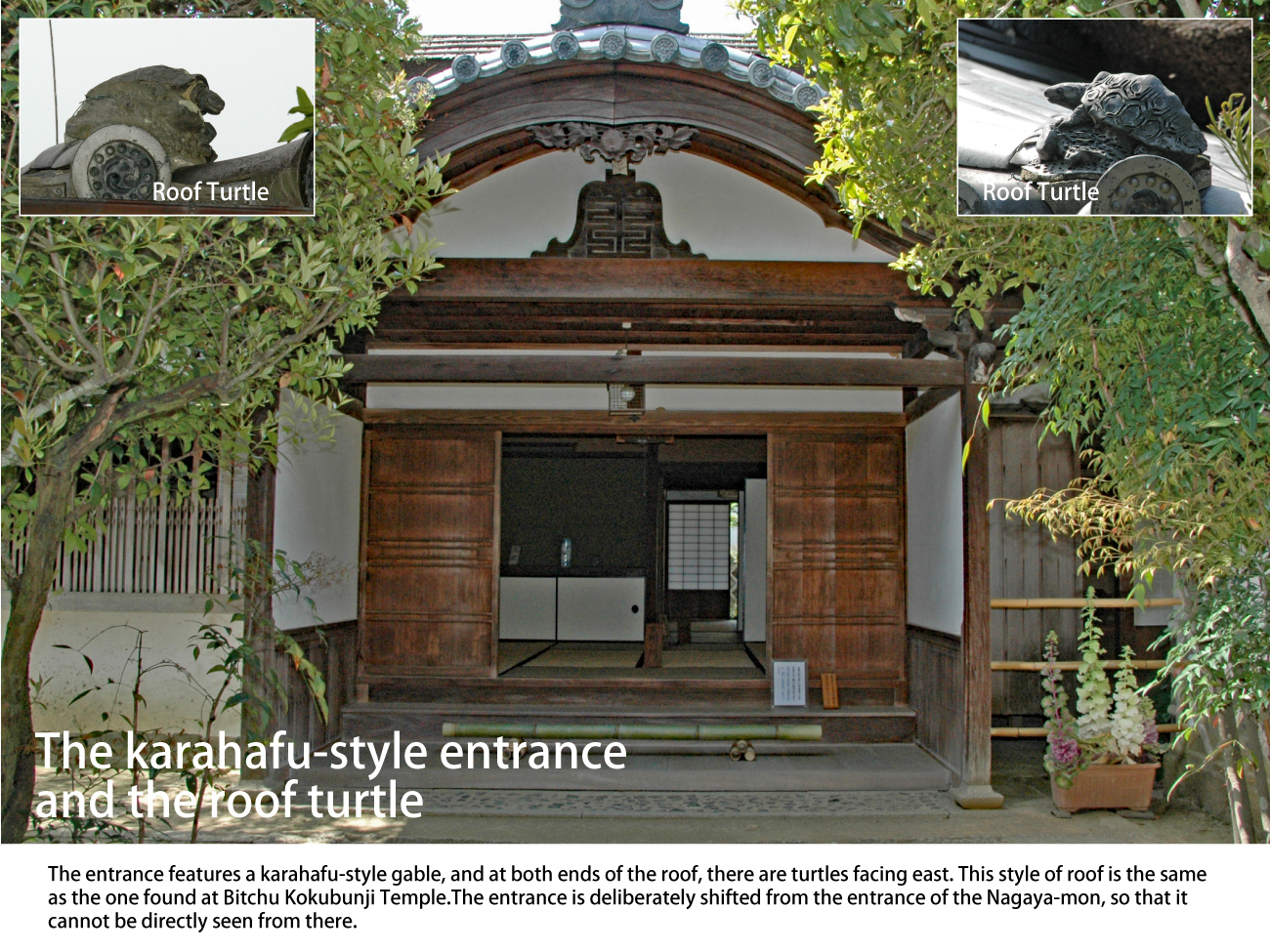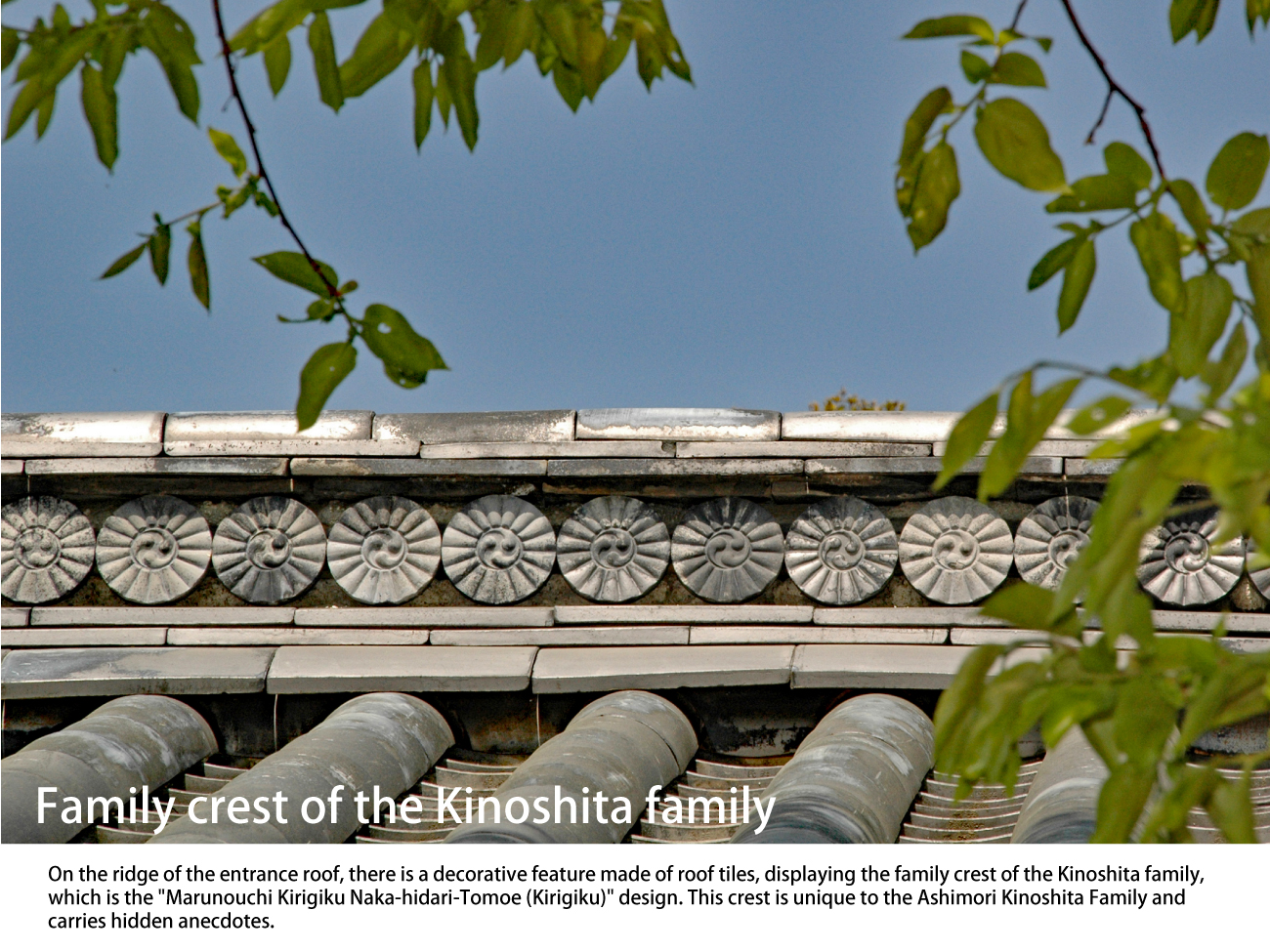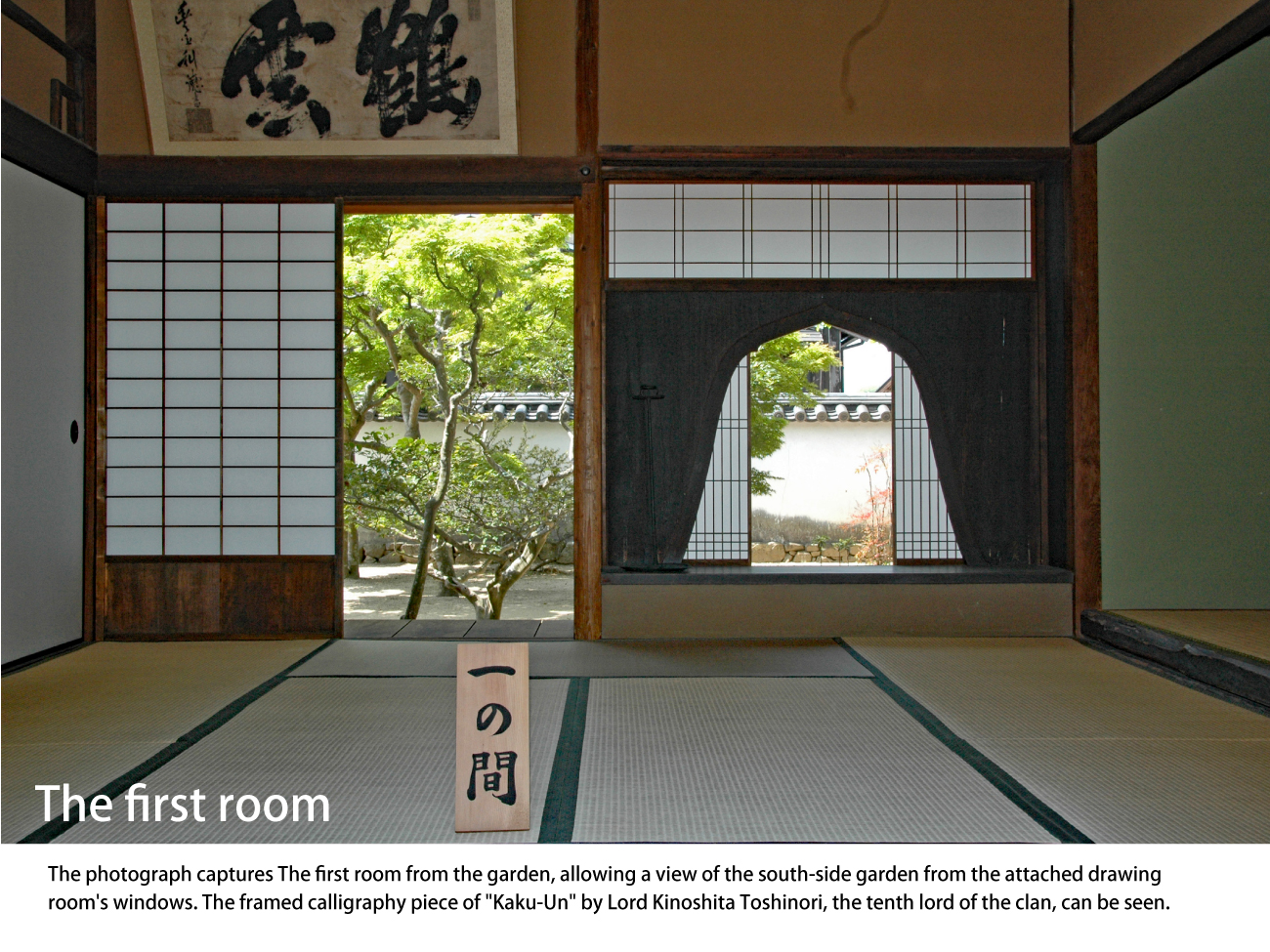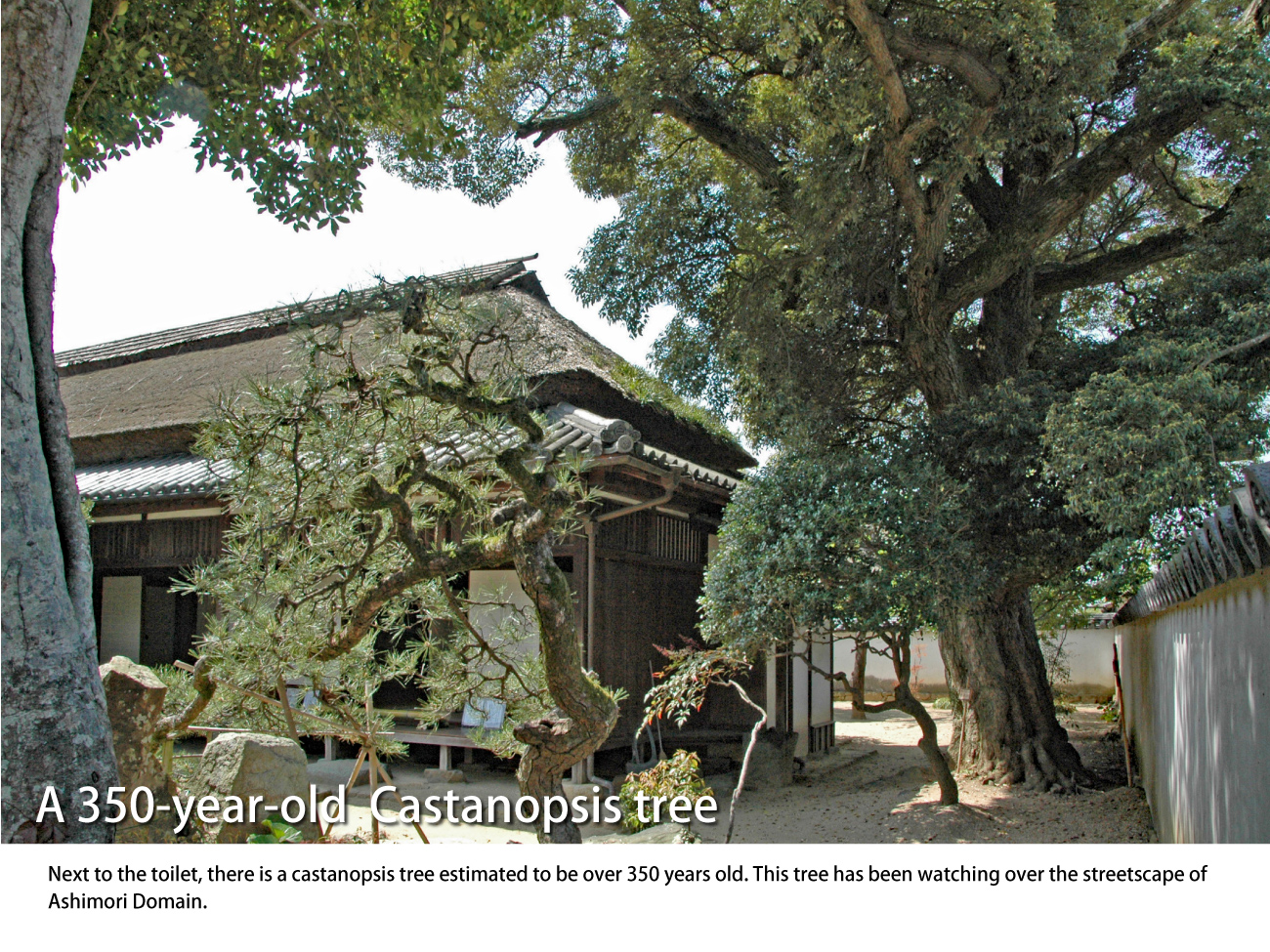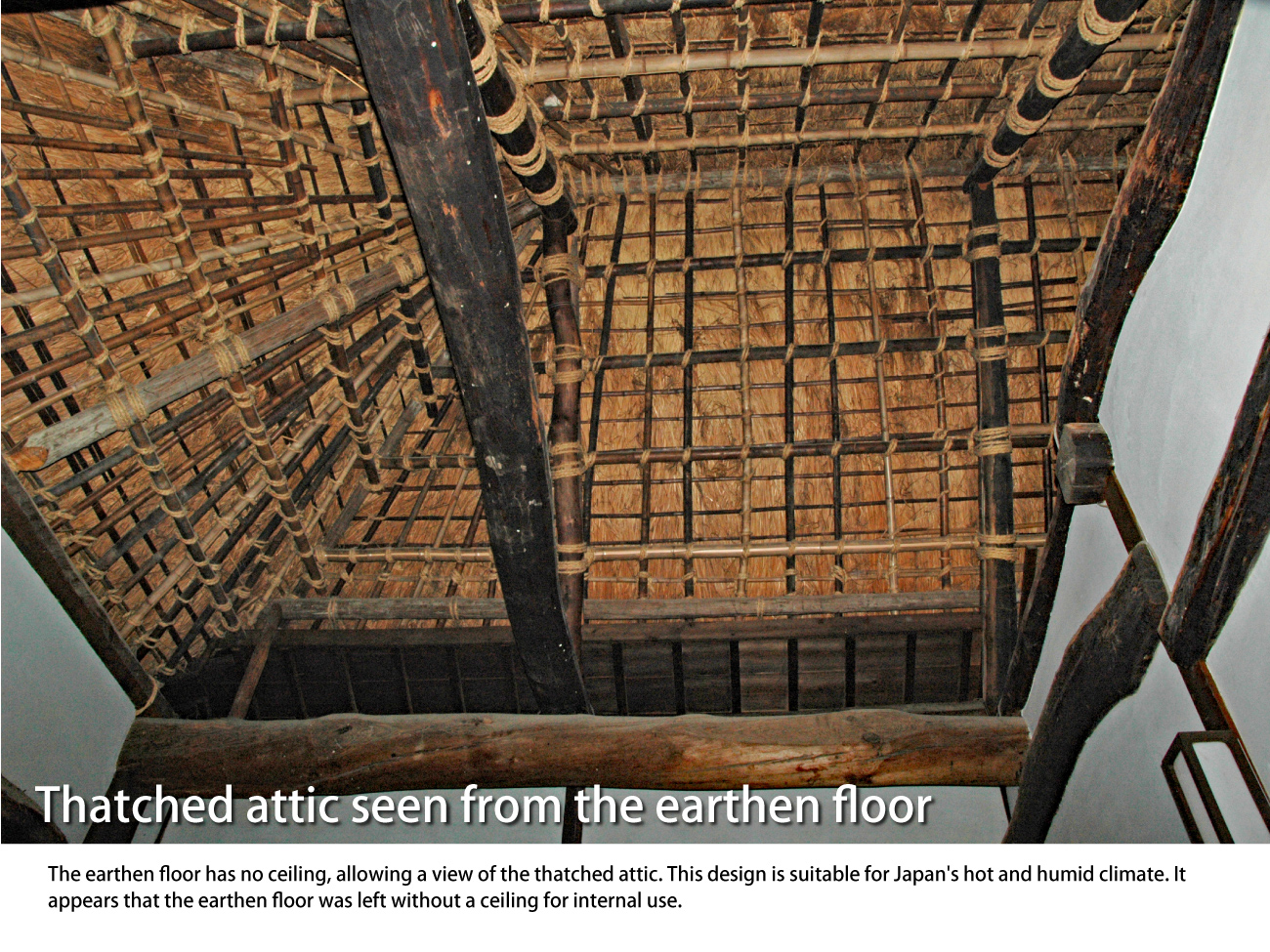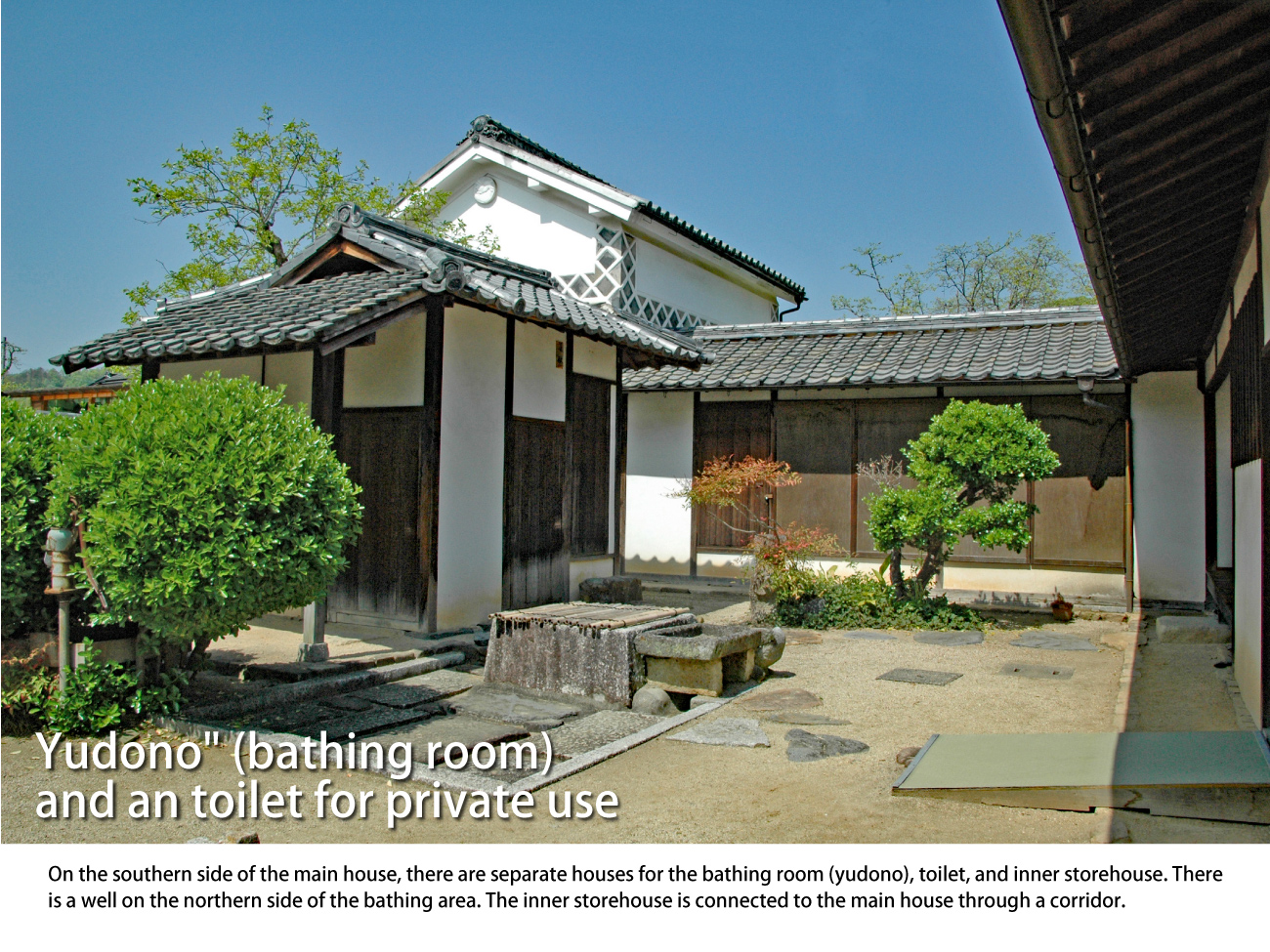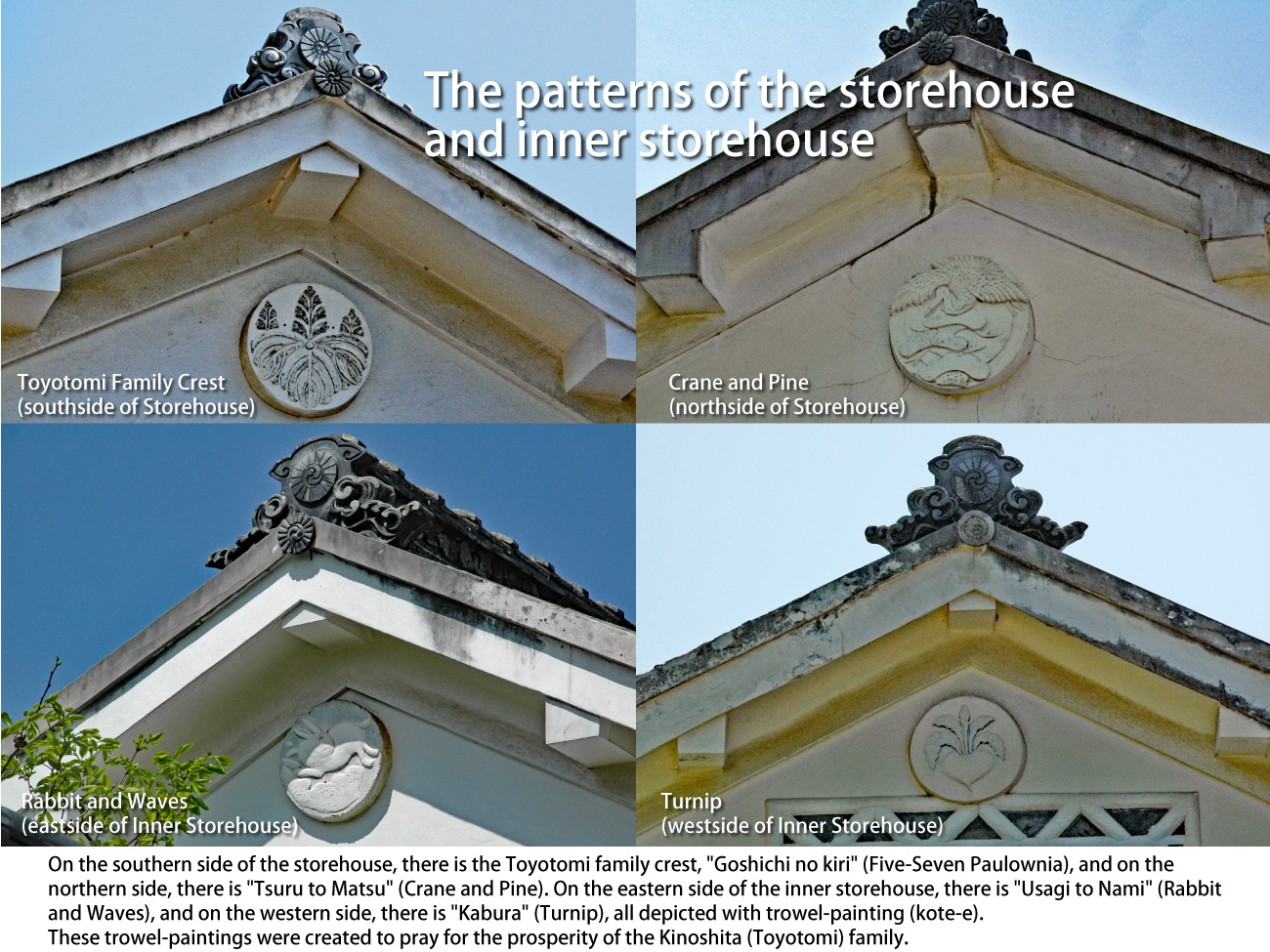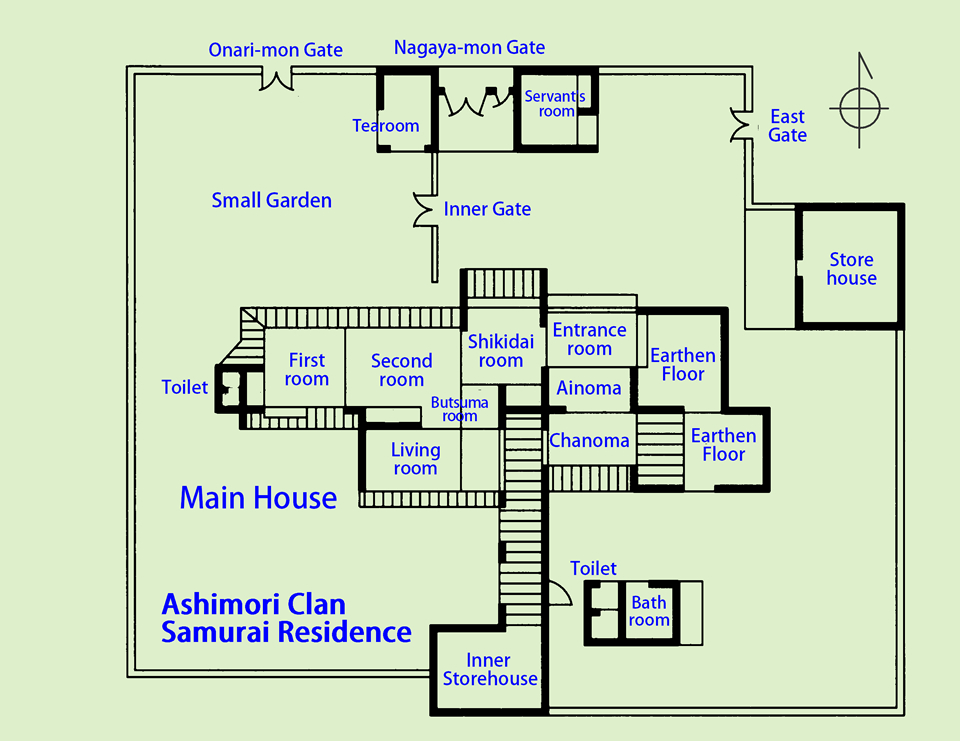Stop by the Ashimori Clan Samurai Residence
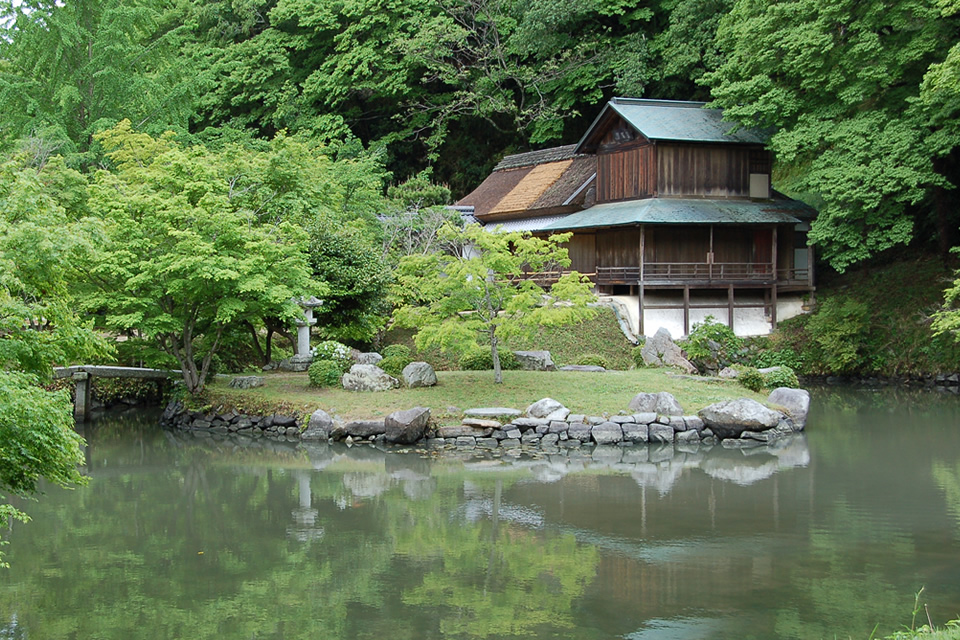
I often visit Omizu-en Garden, which used to be the garden of the Bitchu Ashimori Clan. It is a popular spot for photography, with cherry blossoms in spring, fresh greenery in early summer, autumn foliage, all set against the backdrop of the Ginfu Pavilion.
Next to the parking lot, there is the "Ashimori Clan Samurai Residence." Although I have visited it twice, I usually pass by and head straight to Omizu-en Garden. However, one day, as I casually passed through the row house gate of the samurai residence, I encountered the caretaker who kindly explained the place to me.
The white and namako finishes of the row house gate, the Onari-mon gate, and the surrounding walls embody the solidity and grandeur of the samurai residence. On the other hand, the main house has a modest thatched-roof construction, representing the simplicity and robustness of the warrior society.
The Kinoshita family, the lords of Ashimori Domain, and Kitano-Mandokoro.
I received an explanation from the caretaker.
"The first lord of the Kinoshita family, the Ashimori Domain, was Kinoshita Iesada. Before the Battle of Sekigahara, he was the lord of a 25,000 koku castle in Himeji. He did not participate in the Battle of Sekigahara but guarded Lady Nene. After the battle, in the 6th year of Keicho (1601), his fief was changed to the Ashimori Domain with the same stipend.
Nene, the younger sister of Iesada, married Kinoshita Tokichiro (later known as Hashiba Hideyoshi and Toyotomi Hideyoshi). When Hideyoshi was appointed as Kanpaku (Imperial Regent) in the 13th year of Tensho (1588), they moved to Osaka Castle, and she became known as Kitano-Mandokoro(Lady Nene). This is a scene that has appeared multiple times in NHK's historical dramas."
Based on the information I heard, I have described the Ashimori Domain Samurai Residence and the Kinoshita family.
Before being bestowed with the Kinoshita surname by Hideyoshi, they were originally known as the Sugiwara family. Afterward, they were granted the title of Toyotomi by Hideyoshi and were allowed to use the name Toyotomi. These transitions are also reflected in their family crest.
The crest of the Kinoshita family of the Ashimori Domain


The Kinoshita family has three types of crests.
The crest of "Tachi-Omodaka" is believed to have been used during the time of Kinoshita Tōkichirou, formerly known as the Sugihara family crest.
The crest of "Maru-no-uchi Kirigiku Naka-hidari-Tomoe (Kirigiku)" has an anecdote associated with it. When Kinoshita Iesada was bestowed the title of "Toyotomi" by Hideyoshi, he was also given the chrysanthemum and paulownia crests by Hideyoshi. Until the time of the third generation daimyo, Kinoshita Toshifusa, the chrysanthemum crest was used.
However, it was considered disrespectful to use the chrysanthemum crest granted by the Emperor to the Kanpaku Hideyoshi. As a result, the crest was modified by cutting off the tips of the chrysanthemum petals, adding a circle, and drawing a threefold tomoe in the center, creating the "Kirigiku" crest, which became the crest of the Kinoshita family of Ashimuro Domain.
The crest of "Goshichi no Kiri" underwent a similar modification due to the same reason as the chrysanthemum crest. The design was changed to depict the veins of the paulownia leaf, and it was used accordingly.
There are items left in this samurai residence that serve as evidence of their origins. The scroll displayed in the Ichinoma (First room), titled "Kaku-Un," is said to have been written by the tenth lord of Ashimuro Domain, Kinoshita Toshinori, and is labeled as "Written by Toyotomi Toshinori."

The gable of the entrance roof bears the family crest of "Kirigiku" (cut chrysanthemum), while a masonry picture of the family crest "Goshichi no Kiri" (five-seven paulownia) is displayed on the southern facade of the storehouse.
The painted trowel picture and the decorative turtle roof tile in the storehouse

There are painted trowel pictures (kotee) in the storehouse and inner storehouse, and a decorative turtle roof tile on the entrance roof.
The meanings of these designs are as follows:
1.Kinoshita family crest (southern side of the storehouse): "Kinoshita family"
2.Crane and pine (northern side of the storehouse): "Eternal"
3.Turtle (decorative roof tile on the entrance): "Longevity"
4.Rabbit and waves (eastern side of the inner storehouse): "Avoiding misfortune and prospering descendants"
5.Kabura (western side of the inner storehouse): "Good health and well-being"
When interpreted as a whole, it expresses the wish for the Kinoshita family to prosper for thousands of years, to have longevity, and to have their descendants thrive in good health and well-being.
While it was believed that the Toyotomi clan was extinguished during the Osaka Summer Siege, the Kinoshita family lineage, which descended from Hideyoshi's legal wife, "Kitano-Mandokoro," continued as the lords of Bitchu Ashimori Domain until the Meiji era.
The genealogy of the Toyotomi clan and the Ashimori domain's ruling Kinoshita family.
We have compiled a genealogy of the Toyotomi clan and the Kinoshita family, the ruling family of Ashimori Domain, focusing on the Sengoku period, Azuchi-Momoyama period, and early Tokugawa period.
